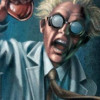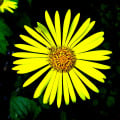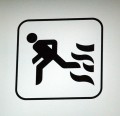- HubPages»
- Health»
- Mental Health»
- Anxiety Disorders
Hysteria (Somatization disorder)- Various methods of treatment.

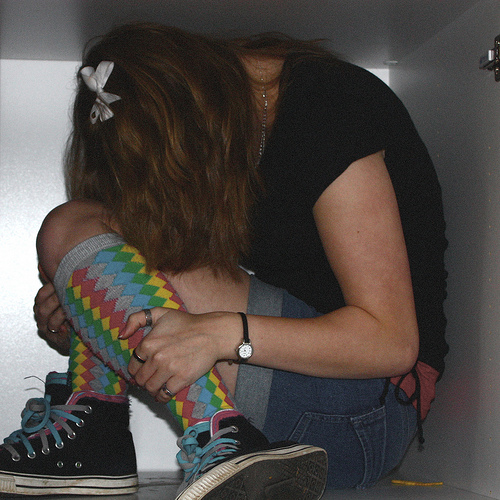




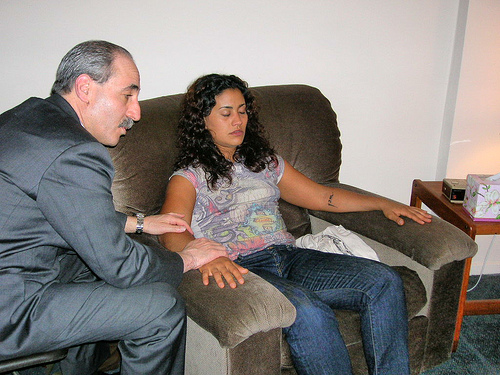
Although still commonly referred to as Hysteria, these days the condition is called Somatization disorder or Histrionic personality disorder, which is far more of a contrived mouthful than the original.
Hysterical neurosis or hysteria is a psychological state that is caused by extreme emotion, or stress such as overwhelming fear, loss or sorrow. The psychological strain can become so severe that the individual will lose control and start showing physical symptoms even lashing out at those around. The person will be extremely emotional, unaware of their surroundings and will often feel pain associated with the particular event. For centuries, it was conveniently thought that hysteria only affected women. For this reason the word hysteria comes from the Greek word “hustera”, meaning “uterus”, because it was thought that “all hysterical symptoms stemmed from the female uterus.”
We know this, of course, as absolute nonsense as men are equally as affected in extreme circumstances.
Sadly those suffering from hysteria are completely consumed by fear and anxiety. The person can think of nothing but the event or problem which creates almost blindness to their surroundings. For many of the sufferers the symptoms of hysteria include a heavy feeling in the limbs, severe cramps, an uncontrollably strong feeling of ascending abdominal constriction, difficulty in breathing, constriction in the chest, rapid heartbeat, feeling of choking, swelling of the neck and of the jugular veins, overwhelming suffocation, headache, clenched teeth, and generalized paralysis. There are, however, various other symptoms of hysteria, such as an inexplicable urge to run and run away, that will help to let off steam. However, when one tries to do this, or to shout, it’s impossible because of a shutdown of the muscular-skeletal system caused by the hysteria.
Hysteria is not a physical disease where there is some simple treatment and cure. It is a serious psychological disorder which some can be born with or also be brought on by emotional or traumatic experiences such as witnessing a violent crime or the unexpected death of a loved one and the terrifying feeling of being left alone. Hysteria can also develop in children who have lived in an extremely abusive environment and cannot escape.
Unfortunately, hysteria can also be a side effect of chemical drugs. The long term use of the anti-anxiety drug, diazepam, for example, has been proven to cause the symptoms of hysteria which is completely contrary to its intended effect.
Those suffering from hysteria are often a danger to themselves and to others and because severe depression is a common symptom, thoughts of suicide can occur.
Even if a person is able to function socially outwardly, the symptoms of hysteria can be detrimental to interpersonal relationships, creating a hidden but overwhelming barrier. Because of this hysteria sufferers often come across as either distant or intense and have difficulty making friends or forming and maintaining intimate relationships.
Hysteria is not always restricted to one person, mass hysteria occurs when a group of people experience paralyzing fear that stems from the same cause. For example, mass hysteria could occur during a bombing, school shooting or a civil disturbance. It is very much thought that mass hysteria was part of the Salem Witch Trials.in 1692 where the population feared witchcraft and put to death many suspected of it. It is best described as emotional contagion, where groups of people have been known to display the same physical and mental symptoms during or after an incident. This has been commonly noted at religious festivals, riots or sports matches where one individual triggers a reaction and the rest of the group then mimics that person’s behaviour. Too often this has resulted in mass violence, excitement or even an outbreak of disease-like symptoms (with no known cause).
Hysterical blindness is now known as conversion disorder which occurs when a person encounters a personal difficulty that they feel unable to cope with by ordinary means. The person therefore unintentionally “converts” the psychological dilemma into unexplainable physical problems such as tremors, paralysis, or even loss of sight, speech or hearing. The symptoms of conversion disorder, however, are often alleviated by therapy.
Histrionic personality disorder is often diagnosed in people, particularly women, who show behaviour patterns marked by overly emotional, attention seeking or exaggerated dramatic thoughts and actions. These people will often come across as self-centred and embellish stories or claim to be the hero, be extremely egotistical, will continually seek approval from anybody and be visibly hurt when it is not given. In order to attract attention they will often dress and behave in sexually inappropriate ways. Although the person is outwardly able to interact socially, they will often be unable to maintain relationships and may threaten or attempt suicide to get attention. Before personality disorders were discovered and defined, histrionic personality disorder was often blamed on sexual problems and/or witchcraft.
Pain disorder occurs when an affected person suffers from chronic, unexplainable pain, which coincides with a psychologically stressful event such as the unexpected death of a partner, pet or loved one. This pain can last from as little as a few days to as much as several years. The pain disorder experienced is not the same as fibromyalgia, although many of the symptoms of these two disorders are identical.
The most common hysteria disorder is somatization disorder which is diagnosed when a person continually complains of phantom physical pain and/or problems although there is no medical cause or reason. The person, feeling more and more frustrated, will go from one doctor to another, often adding new complaints at each visit. Until recently somatization disorder was considered a more serious form of hypochondria. In this case a person with somatization disorder is absolutely certain such a physical problem exists, in fact, they will even feel severe pain associated with these supposed illnesses or injuries. Somatization disorder sufferers will also often manifest unexplainable physical disabilities similar to those noted in conversion disorder sufferers
Hysterical convulsions (fits). This is probably the most serious symptom and the one that most people associate with hysterics. The victim suffers sensory disturbances such as tunnel vision, dulled or heightened senses. They may also be affected by pounding or racing heart, hyperventilation or shortness of breath. They may be racked by trembling or shaking, dizziness or feeling like they are going to faint. Emotionally they may suffer feelings of unreality or detachment and fear of losing control or even dying. In the case of children parents may recognize hysteria symptoms after extreme tantrums or in excessively upset or traumatized children who are very difficult to calm down. In order to eliminate any underlying medical causes a thorough assessment is recommended during which time is spent exploring the hysteria symptoms, feelings and concerns with a physician. It is important not to make a self-diagnosis, as it is a subject that requires specialist interpretation.
Remedies and therapies.
As hysteria, in the initial stage, should be properly diagnosed by a doctor or medically qualified person we should look at conventional medication first, but these should only be administered to patients with either severe or violent hysteria symptoms. Anti-anxiety medications can exacerbate symptoms or elevate heart rate `and can also have unpleasant side effects. For example, some of the side effects of Xanax are depression and jaundice; while Ativan can cause dizziness and amnesia. Anti-depressants are often prescribed in an attempt to control wild mood swings and thoughts of suicide. Lexapro is one of the most commonly prescribed anti-depressants but although it is effective amazingly it can actually increase thoughts of suicide.
Pain killers are often prescribed, with care, for patients suffering from pain disorder and somatization disorder. Extreme caution should be used, as the pain associated with hysteria disorders is mostly psychological and most pharmaceutical pain killers can have unpleasant side effects. When treating painful symptoms of hysteria disorders, it is advisable to use either natural remedies or placebos.
Essential oils - Hysteria, is a difficult condition to treat and the use of essential oils is normally better used to prevent a hysterical outburst than to cure one once started. Hysteria is the result, often, of a violent swing of mood and the oils need to be able to calm the emotions. This is a condition where essential oils can work in conjunction with counselling or psychotherapy and obviously the conditions under which the hysteria occurs can be wide and many. When hysteria occurs the oils to use are those normally given for shock (bad news, death etc.). These would include Melissa, Marjoram, Roman Camomile, Clary Sage, Lavender, Neroli, Rosemary, Peppermint and Ylang Ylang. These can also be used to prevent an attack by using them in a fan, or burner. The blend can also be directly inhaled from the mixing bottle (if the person is co-operative) or a few drops on their clothes or a tissue. When the person has calmed a massage using Rose and Benzoin in Evening Primrose carrier oil, will help maintain calm and balance. A parent or partner who has to deal with a hysterical person, particularly long-term, will also benefit from the oils in a fan and the use of Dr Bach’s Rescue Remedy.
Homeopathy. There are many homeopathic remedies that can help relieve the symptoms of hysteria. Each remedy depends on the type and severity of the symptoms and is best selected by a trained Homeopath. As a few examples, Ignatia can be given to help relieve convulsions and perceived pain, Valeriana has a calming effect and can help with mood swings, and Gelsemium can help relieve short temper and irritability.
Herbal Remedies -
A common herbal remedy is St. John’s Wort, which is considered a very potent relaxant that can be used to treat depression; and in fact, is often considered the poor man’s anti-depressant. The herb can be given in tea, capsule, or tincture form. Sensitivity to sunlight can develop after long term use; otherwise, St. John’s Wort has no known side effects. Passion flower, which has practically no side effects, can also be used as a tranquilizer or to help induce sleep.
The black berry fruit is an old country remedy for hysteria. Seven pounds of this fruit and a handful of salt should be put in a large jug filled with water. The jug should be covered with muslin and kept in the sun for a week. The patient suffering from hysteria should take 10oz of these fruits on an empty stomach, and drink a cup of water from the jug. On the first day, another 7 pounds of these fruits, mixed with a handful of salt, should be started in another jug filled with water, so that when the contents of the first jug are finished, the contents of the other will be ready for use. This treatment should be continued for two weeks.
Honey is regarded as another effective remedy for hysteria. Take one tablespoon of a quality honey daily (use Scottish heather or, if you can afford it, Manuka honey.) Do not use Chinese honey as they just feed the bees on processed sugar. Honey breaks down the triglycerides that cause blockages in the valves of the heart, thereby avoiding minimizing or helping prevent the occurrence of high blood pressure. Because the flow of blood through the heart is unrestricted, blood pressure can remain normal and hysteria is less likely to occur.
Bottle gourd (Calabash) has been used as an external application in hysteria. Using a food processor produce a fresh pulp of this vegetable which should be applied onto the head of the patient in the treatment of this disease. It has a reputation for being extremely soothing and cooling, and will help to keep the person calm, it is, however, very messy and difficult to apply to a panicking patient. Do not ingest, particularly if the juice tastes bitter.
The herb rauwolfia is very useful for hysteria. One gram of the powdered root should be administered mixed into one cup of milk in the morning as well as in the evening. Treatment should be continued till a complete cure has been obtained.
Lettuce is considered valuable in the treatment of this disease. A cup of fresh lettuce juice is mixed with a teaspoon of Indian gooseberry juice and should be given every morning for a month, as a medicine in the treatment of hysteria. While the consumption of lettuce and fresh vegetables may have no direct bearing on the condition itself, consuming lettuce and fresh vegetables can help cleanse the body of any toxins that could be causing health problems further magnifying problems related to hysteria.
Asafoetida has also proved beneficial in the treatment of this disease. Inhaling the odour of this gum prevents hysterical attacks. If taken orally, the daily dosage should be from 0.5 to 1.0 gm and is known to have very relaxing properties.
Acupuncture - This Chinese use of fine needles is an affordable way to treat nearly every illness and disorder. In properly qualified hands, acupuncture has little risks or side effects. Acupuncture sessions are quite inexpensive and widely available.
Hypnotherapy - Because hysteria is such a serious psychological disorder, hypnotherapy is sometimes necessary to help the person cope. Hypnotherapy can help the person relax, deal with their problems, and begin to develop better habits. Although hypnotherapy does not have any serious risks, it should only be conducted by a trusted fully qualified professional. Hypnotherapy does not, by any means, have a one hundred percent success rate; however, it is a legitimate and, at times, useful treatment option. The severity of the illness or disorder is what determines the cost as well as the number of sessions, which can be significant.
Psychotherapy - This is considered a viable treatment option for hysteria. It is often found most useful for treating victims of conversion disorder. However, many people do not morally or medically agree with the teachings of Sigmund Freud. Psychotherapy should only be used by patients who are open to a cure from this type of therapy, which needs explaining to them in layman’s terms.
Cognitive Therapy - This is not as controversial as psychotherapy and can help treat irrational thoughts and the symptoms of depression. This therapy type is particularly effective for those suffering from histrionic personality disorder. Cognitive therapy also focuses on behavioural modification and, therefore, can help the patient develop a better and more realistic lifestyle.
Group Therapy - It is a cost effective treatment option for patients with mild symptoms of hysteria disorders. The setting is designed to be very relaxed and it can be helpful for patients to know that they are not the only ones suffering from these problems. However, group therapy should not be considered a treatment option for severe or particularly violent hysteria sufferers.
The Bach flower remedies are another effective homeopathic treatment. The remedies, developed by English homeopath Edward Bach, are made up of tiny and very concentrated amounts of flower material. Rescue Remedy is the Bach flower remedy most commonly used in treating hysteria and confused behaviour.
Don’t overlook a good old fashioned hot sweet drink perhaps sweetened with a quality honey which is a mild sedative. Never give alcohol which will make the situation far worse. Do not slap the persons face to shock them back to normality, this is Hollywood nonsense and all that normally happens is that you will make the situation worse or they may punch you back. A comforting arm coupled with soothing words will often do the trick, do not argue or attempt to forcibly make your point.
Copyright Peter Geekie 2014
How do you deal with Hysteria ?
If suffering an attack of hysteria or helping someone who is, how do you deal with it
© 2012 Peter Geekie
